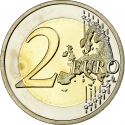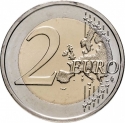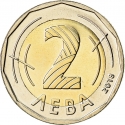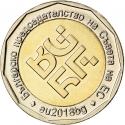You are about to finish your registration. Please check your mailbox (including spam folder). There should be a letter with a confirmation link. Check setting to make sure that your e-mail address is correct.
Send letter againDescription
The Presidency of the Council of the European Union is responsible for the functioning of the Council of the European Union, the upper house of the EU legislature. It rotates among the member states of the EU every six months. The presidency is not an individual, but rather the position is held by a national government. It is sometimes incorrectly referred to as the President of the European Union. The presidency's function is to chair meetings of the Council, determine its agendas, set a work programme and facilitate dialogue both at Council meetings and with other EU institutions.
The Hungarian Presidency of the Council took place during the second half of 2024, taking over from Belgium and passing it to Poland.
Engraver: Zoltán Endrődy
Obverse

|
Depicts the coat of arms of Hungary outlined. To the left of it, the inscription "20", and to the right, the inscription "24", referring to the year of issue and Hungary's presidency of the Council of the European Union. Around the depiction of the coat of arms is the circular inscription "HUNGARIAN PRESIDENCY OF THE COUNCIL OF THE EUROPEAN UNION". On the outer part, there is a stylized network of interlocking semicircles featuring the 12 stars symbolizing the European Union. AZ EURÓPAI UNIÓ TANÁCSÁNAK MAGYAR ELNÖKSÉGE • |
|---|---|
Reverse

|
Depicts characteristic, historical sites of Hungary. At the top, in the foreground, is the Millennium Monument located at Heroes' Square, with the Parliament building behind it, and in the background, the Tihany Abbey. At the bottom, there are rows of dots in a semicircular arrangement that grow larger towards the edge, symbolizing a meeting room of the parliament. Along the edge at the top, in two rows, is the denomination and the inscription "FORINT". At the bottom, in a circular inscription, is the word "HUNGARY". On the left side, incorporated into the depiction of the Parliament building, is the mint mark "BP.", and on the right side, incorporated into the depiction of the meeting room, is the engraver's privy mark. 7500 |
| Edge |







